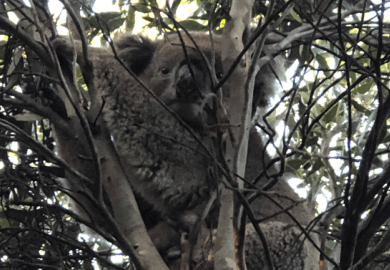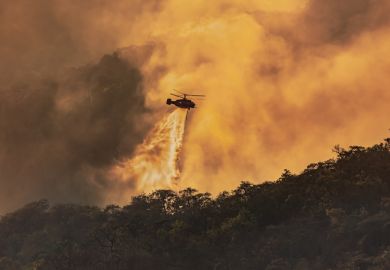In our western way, we love to create dualisms, so that it is no surprise that the distinction between what we call urban and what we label rural is not only deep but tenaciously held. Nowhere is this more so perhaps than in Great Britain (and in England especially), but it is certainly not confined to our densely populated islands. That when pressed we find it hard to define what "rural" actually means in no way diminishes the importance that the topic holds for historians, geographers and environmentalists alike, to name but a few who focus on it. These three books provide a sampler and a spectrum of what scholars of different traditions and with different purposes can make of the rural scene in the industrialised parts of the world.
John Fraser Hart's book is a re-working of his 1975 Look of the Land volume and in essence belongs to the idea of the rural landscape as a morphology of forms. Rocks and plants are acknowledged but its core is about land division, farm structure, small towns and the urban edge. The locale is primarily the United States (though not California after the Mexican period), but there is material from the United Kingdom and other European countries. It is a book that radiates affection, especially for the details of farming - for the barn or the feedlot's structure or the size and shape of the slurry lagoons on the thousand-hog operations of a subsidiary of Nippon Meat Packers. It is wonderful stuff in terms of its catholic eye: the English hedge is included in a discussion of field boundaries, though not perhaps with all the up-to-date detail revealed by historical geographers and ecologists alike, for it is often not so much a case of fences rather than hedges than nothing at all in place of hedges. Hart does not go beyond the first level of explanation for the features he sees, which is mostly in terms of available materials and adaptation to purpose, but it is a wonderful record to have between two covers and is well produced with photographs of exemplary clarity.
The Paul Boyle and Keith Halfacree-edited collection of 16 essays is very different. There is a concentration on process and its outcomes and a methodology of the moment. The topic of townspeople wanting to go and live in rural areas is one that is reaching a wider public in the UK in social terms and in the possible conversion of open land to house them.
Basically, the story of rural depopulation in the industrial nations seems to be going into reverse and more people want to move to the country. These are not, generally speaking, recent migrants returning to roots but city dwellers wanting a change of lifestyle. Though the majority of the work reported is on the UK, examples of analogous phenomena in the US and Australia are given. Tony Champion gives us the data on the "rural turnaround" and then the variables of class, income, identity and indigeneity, ethnicity and gender are variously described, interpreted and theorised by other contributors.
A number of central concepts are developed: Cloke and his fellow workers, for example, highlight the idea of "cultural competence", which encapsulates the cultural imaginations of what rural life should be like and the practices of lifestyle, social relations and consumption that then flow from them. The concept applies both to the immigrants and the members of the communities that receive them. That there should be conflicts is scarcely remarkable, but the ethnographic research employed to draw them out is certainly a better read than tables of statistics. That some of the inhabitants of Swaledale should find themselves bracketed with the "fourth world" (as native Americans are) is a construct that would be nice to hear the dalespeople themselves assess.
Cultural competence is a very useful idea, though to non-specialists it has resonances of value loadings that might hamper its reception and understanding. In a final chapter, the editors discuss at some length the model of collective action that they think can best help us to extract general themes from this work, ending with suggestions that more work might usefully be done on the ways in which all kinds of rural dwellers seek to adapt to changing situations, not least those typical of what is called the "post-productivist" countryside.
In essence, though, some of the types of problems encountered when urban areas get gentrified are transferred to locales where their visibility is even greater. Clearly, conflict is part of the process and we are unduly innocent to think otherwise. The complex ways in which the people involved perform their roles as agents is brought out time and time again in a book that is unafraid to explore those labyrinths.
Although Jules Pretty's book is about production more than anything else, he wants to move on from the barley prairies to a rural scene producing more "organic" products and being the site of community regeneration. He is specifically concerned with the intensive agriculture found in Britain today (with varying regional intensities, it is fair to say) and the way that not only the ecology of the wild has been pared down, but the human communities as well. Thus, his book falls neatly into four parts: the idea of sustainable agriculture and food systems, sustainable communities and thence to policies. The tenor of his arguments will be familiar to many: there is too much food, accompanied by too many toxic substances and providing a living for too few people. This situation also provides the surplus housing to which some of the counter-urbanites come, as discussed in the Boyle and Halfacree book.
Now, a book whose prelims carry two pages of endorsements from campaigning groups and media people, whose first-chapter epigraph starts with the lines from A. E. Housman that contain the phrase about the "land of lost content", and a later epigraph that quotes a great deal of Philip Larkin's superbly miserable "Going Going", introduced the rather gloomy feeling that another environmentalist-plus-cross-stitched-smock polemic was about to be manifested. But it is nothing like that: it is well documented, coherently argued and free of romantic rural mythologies. It points to the possibility that the irrationality of food production in its current energy-consumptive, low-flavour and ecologically hegemonic form can be transcended in a way that will provide decent livings for rather more people. The book is like the Town and Country Planning Association's Planning for a Sustainable Environment (1993) in its sheer lack of impractical radicality and its obvious reasonableness.
There are, perhaps, some problems that Pretty does not address, which relate to regional differences. For example he talks about the stepwise alterations that could be made to make rural economies less intensive. His measures might well be applied by owner-occupiers or even the tenants of enlightened landlords, but what about those who merely manage large farms (of which there is a higher proportion in Britain than in the rest of Europe) on behalf of very large companies? Their autonomy must be very low (how are their cultural competencies?), yet their land is most in need of change away from "efficiency".
Given recent headlines, too, I wonder if the potential for change at the hands of biotechnologists has not been underestimated. The downsides of this are becoming apparent, but it could just be used subversively to underpin a whole set of rural enterprises at a small scale, too. The presence in the field of biotech companies (a kind of "appropriate biotechnology") interested in cocking a snook at the big players is essential.
I am also led to wonder whether the kind of rural communities that Pretty envisages would be free of the "cultural incompetencies" that Boyle and Halfacree's book describes: not all the members of the renewed communities will want to go to chapel on Sundays. As Champion shows in his contribution to the essays on counter-urbanisation, even the remoter areas of Britain are now experiencing a net inward shift of population, though not perhaps of employment opportunities tied to their localities. Nevertheless, this book evokes in the end not gloom but hope that its basic ideas might transcend regional and social detail and inform rural strategies.
So if your visiting professorship took you outside the big cities of the US, read John Fraser Hart and remember the drives to the fruit farms, and the weekend cabins so generously lent by colleagues; if you want to undertake primary research on the way we live now in rural Britain, then Boyle and Halfacree will introduce you to the kind of discourse in which it is conducted; if you live here and think it might be possible for us and, indeed, some other species to live better, then read Pretty, especially in conjunction with Earthscan's other recent book, Factor Four by Ernst von Weizsacker, Amory Lovins and Hunter Lovins. There must indeed be, "The happy highways where I went/And cannot come again", but there is a choice of roads onwards as well.
Ian Simmons is professor of geography, University of Durham.
The Rural Landscape
Author - John Fraser Hart
ISBN - 0 8018 5717 1
Publisher - Johns Hopkins University Press
Price - £30.00
Pages - 401
Register to continue
Why register?
- Registration is free and only takes a moment
- Once registered, you can read 3 articles a month
- Sign up for our newsletter
Subscribe
Or subscribe for unlimited access to:
- Unlimited access to news, views, insights & reviews
- Digital editions
- Digital access to THE’s university and college rankings analysis
Already registered or a current subscriber? Login



